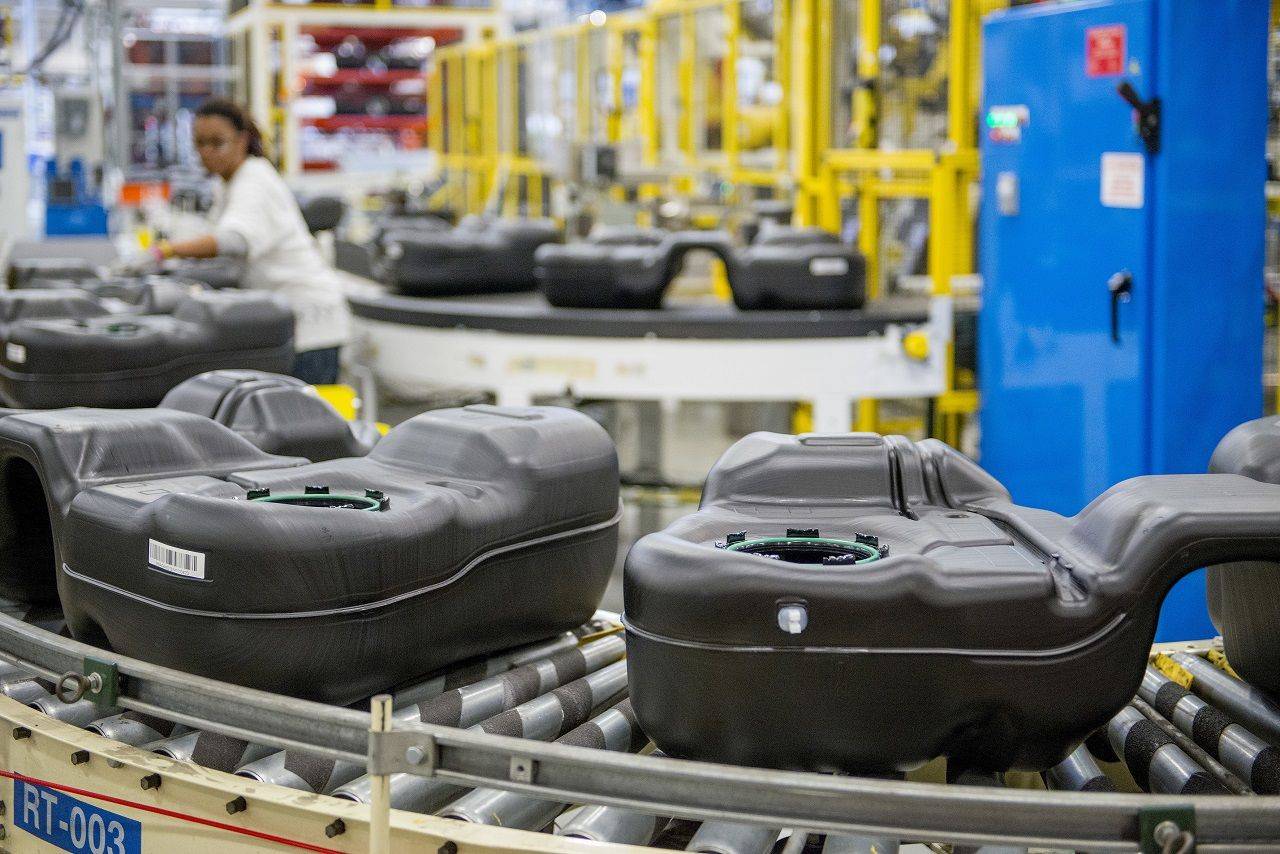The group confirms all of its annual prospects, thanks to an order book for the semester “amply greater than one year of turnover”. (photo credit: Plastic Omnium)
(AOF) – Plastic Omnium takes the lead in the SBF120 (+5.71% to 19.64 euros) after the publication of its half-year results. If the net income group share is down 4.1% to 100 million euros, the operating margin jumped 16.9% to 210 million euros with economic turnover up 34.7% to 5.81 billion euros and free cash flow up 43.1% to 1,912 million euros.
The group confirms all of its annual prospects, thanks to an order book for the half-year “amply greater than one year of turnover”.
“The particularly high level of order intake illustrates the acceleration of Plastic Omnium both in lighting, hydrogen and electrification, as well as in its historical activities”, declared Laurent Favre, Chief Executive Officer of Compagnie Plastic Omnium SE.
“These orders are strongly contributing to the geographical diversification of our activities, particularly in the United States,” he adds, judging that this first half “demonstrates the relevance of the Group’s diversification strategy which, by adapting to the challenges of sustainable mobility, is implementing its long-term growth drivers”.
AOF – LEARN MORE
Key points
– 27th “tier 1” automotive supplier born in 1946, world number 1 in bodywork parts, fuel systems and modularization;
– Turnover of €9.5 billion generated mainly in Europe (48%), ahead of North America (29%), China (12%) and the rest of Asia (8%) ;
– “PO Way” business model: independence, self-financing capacity, investments to capture market growth, innovation, integration of employees;
– Capital 59.4% controlled by the founding Burelle family and hosting the French state (1.54%), Laurent Burelle being Chairman of the Board and Laurent Favre Managing Director;
– Controlled balance sheet with a debt to equity ratio of 86%, a leverage effect of 1.9 against €2.3 billion in cash and €289 million in free cash flow.
Challenges
– 2030 strategy “Driving a new generation of mobility” for the 4 branches:
– financial objectives, raised, of €11.5 billion in revenue in 2025 and + €15 billion in 2030,
– IES (intelligent exterior systems), world leader in bumpers and tailgates: strengthening of positions in North America (12% by 2025 vs. 9.9%) and in China (26%), as well as in the electric vehicle sector (30% vs. 8% of revenues),
– Lightning 1, new lighting division: target of €1.5 billion in revenue in 2027, via an increased presence in Asia and North America,
– HPBO, world leader in block modules: double-digit sales growth in North America and Asia,
– CES, world leader in pollution control tanks and systems: market share increased to 21% in 2030 vs. 21% in fuel systems and launch of an offer of electrical energy storage and management solutions with €1 billion in revenue in 2030,
– New Energies, new hydrogen activity of tanks and hydrogen fuel cells: revenue target of €300 million in 2025 and €3 billion in 2030, with market share of 25% in storage and 10 to 15% in fuel cells, via an annual investment of €100 million,
– Offensive innovation strategy based on 47 R&D centers, boosted by its innovation ecosystem and its investments via the APVentures and Aster funds;
– “Act for climate” environmental strategy aimed at the carbon neutrality of activities by 2025 and across the entire value chain by 2050, via eco-design and waste recycling, reduction of energy consumption, preservation of biodiversity, design of light and more aerodynamic parts (5 to 17% of ZEV in 2025 revenues);
– Launch this year of OP’n Soft, an on-board software solutions entity bringing together the group’s expertise to better penetrate the market, 40% of the value of new vehicles coming from software.
– Record order intake in the United States for storage solutions and sustainable mobility services.
Challenges
– Continued outperformance against a declining global market;
– Still strong dependence on sales to Volkswagen, Stellantis and Daimler;
– Response to cost inflation, customer production stoppages and shortages of semiconductors: flexibility of the production tool and OMEGA transformation plan;
– Management of industrial projects in France, China and the United States in response to requests for modules, pollution control systems, hydrogen tanks and electric vehicle cockpits ;
– After a 17.5% increase in sales at the end of March, objectives 202”: 10% increase in operating income and self-financing of more than €260 million ;
– 2022 dividend of €0.39, up 39%.
Negotiations with builders
On average, equipment manufacturers represent between 60 and 85% of the manufacturing cost of a vehicle. According to the Federation of Vehicle Equipment Industries (Fiev), negotiations are very tense with manufacturers regarding the passing on of increased costs. The price increases concern both electronic components, raw materials, such as steel, nickel, lithium or palladium, energy and transport. Equipment manufacturers mainly negotiate with Stellantis and Renault to set up indices to pass on increases. They are also betting on innovation, differentiation, upgrading and internationalization.
